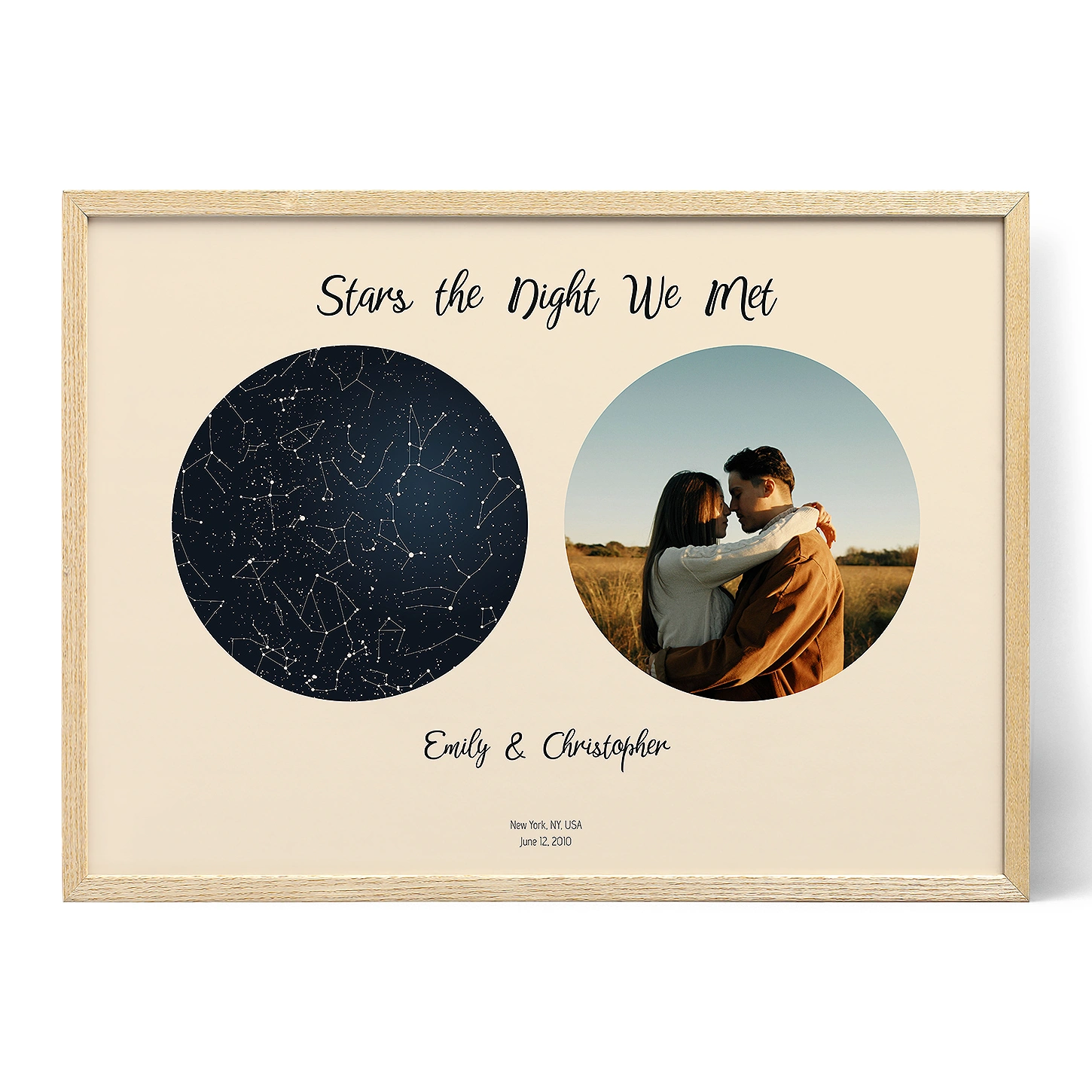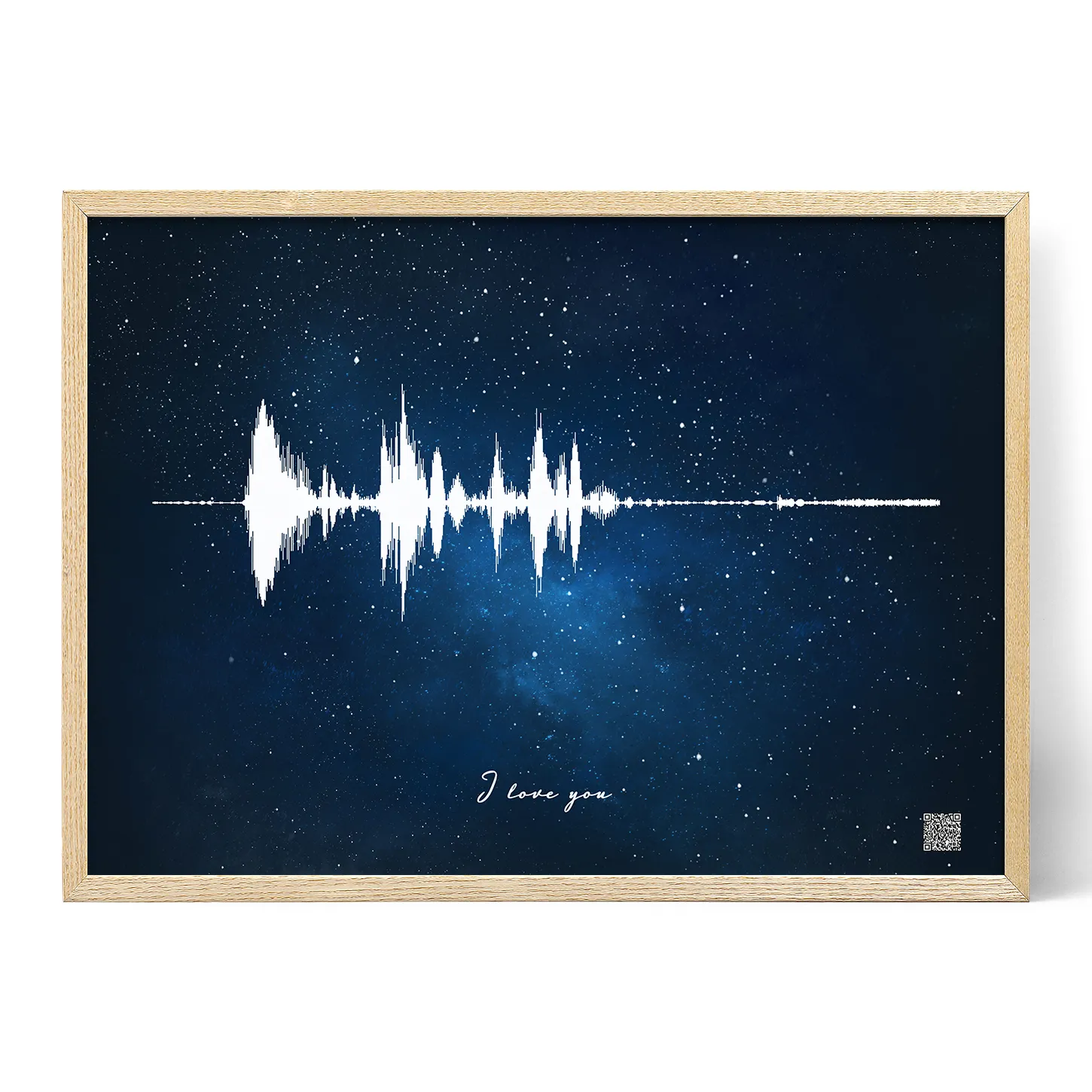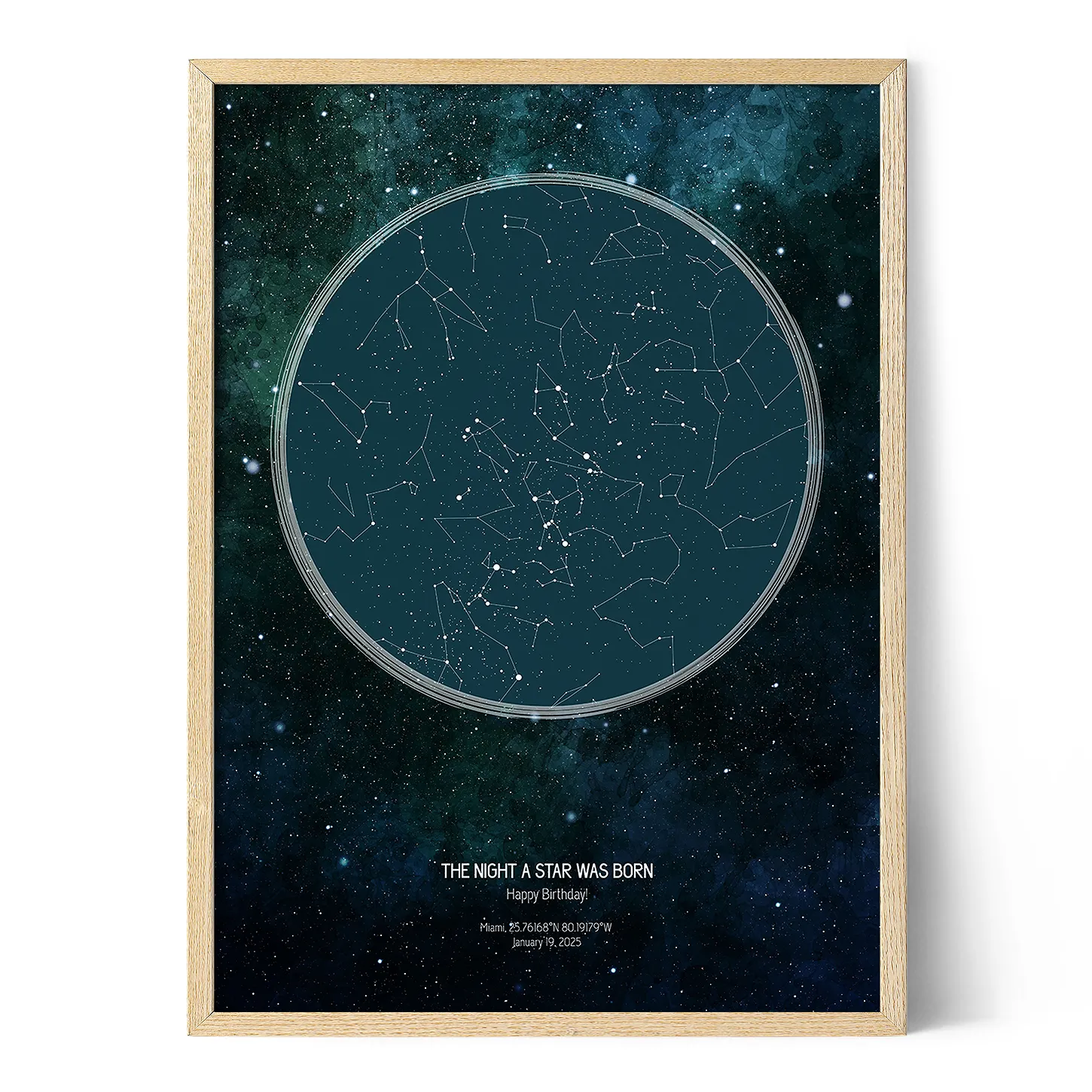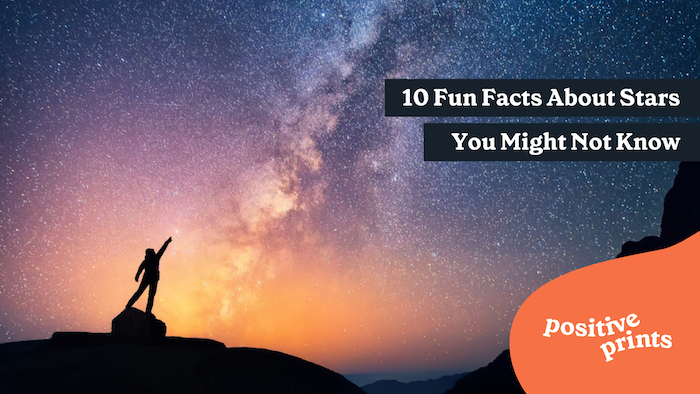
Updated September 2023
Twinkling and mysterious, stargazing can be truly out of this world — so it’s little wonder that these bright jewels and their sparkling patterns have fascinated humans since we could first look up. But have you ever wanted to know more about these sparkling entities? This article is packed with stellar facts, so next time you wish upon a star, you can recall a little something about it.
1. Star Light, Star Bright
Did you know that all the stars we can see in the sky with the naked eye are bigger and brighter than our sun? In fact, astronomers have identified at least 12 types of stars, 11 of which are identified by a single letter (for example, O, B, A, F, G, K, M, R, N, T, and Y). These classifications are made to distinguish differences in the qualities of stars, such as their temperature, color, and brightness. For example, R, N, T, and Y stars are cooler than O and B stars.
Our own sun is a class G star, while the brightest star we can see in the night sky is called Sirius. Also sometimes known as the “Dog Star,” as it is found in the constellation of Canis Major, Sirius is a class-A star that actually shines 25.4 times brighter than the sun.
2. Co-Stars!
It might sound unlikely or impossibly romantic at first, but it turns out that, rather than hurtling alone through the void, several stars out there have a significant other. They are known as binary stars. As you might have guessed, binary star systems are formed of two stars locked in orbit around each other, bound together in a gravitational two-step.
Waltzing through the nighttime sky, these celestial pairings aren’t even as uncommon as you might think. You won’t be able to separate them with the naked eye, but through a telescope or even binoculars, around 5-10% of visible stars turn out to be binaries. One of the best examples is found in The Big Dipper (the rear end of the constellation Ursa Major, or Great Bear). Here, the second-to-last star along “the handle” isn’t a star at all, but a pair of stars named Mizar and Alcor.
You can celebrate twin events and how the heavens appeared on two special occasions with a uniquely personal Double Star Map.
3. Constellation Prize
Did you know that, all together, there are 88 officially recognized constellations in the night sky? Most are named after animals, mythical beasts, and characters from Greek and Roman mythology. Five constellations can only ever be viewed in the northern hemisphere (the sky above the equator), and three only in the southern hemisphere (the sky below the equator).
The largest constellation by area is sprawling Hydra (the water serpent), which occupies 3.16% of the night sky, while the smallest is Crux (often known as the Southern Cross), which takes up a mere 0.17% of the heavens. Star map gifts are popular any time of year, and you or a loved one can discover just how the stars were set over your head at any time or place with our quality customizable Star Map.
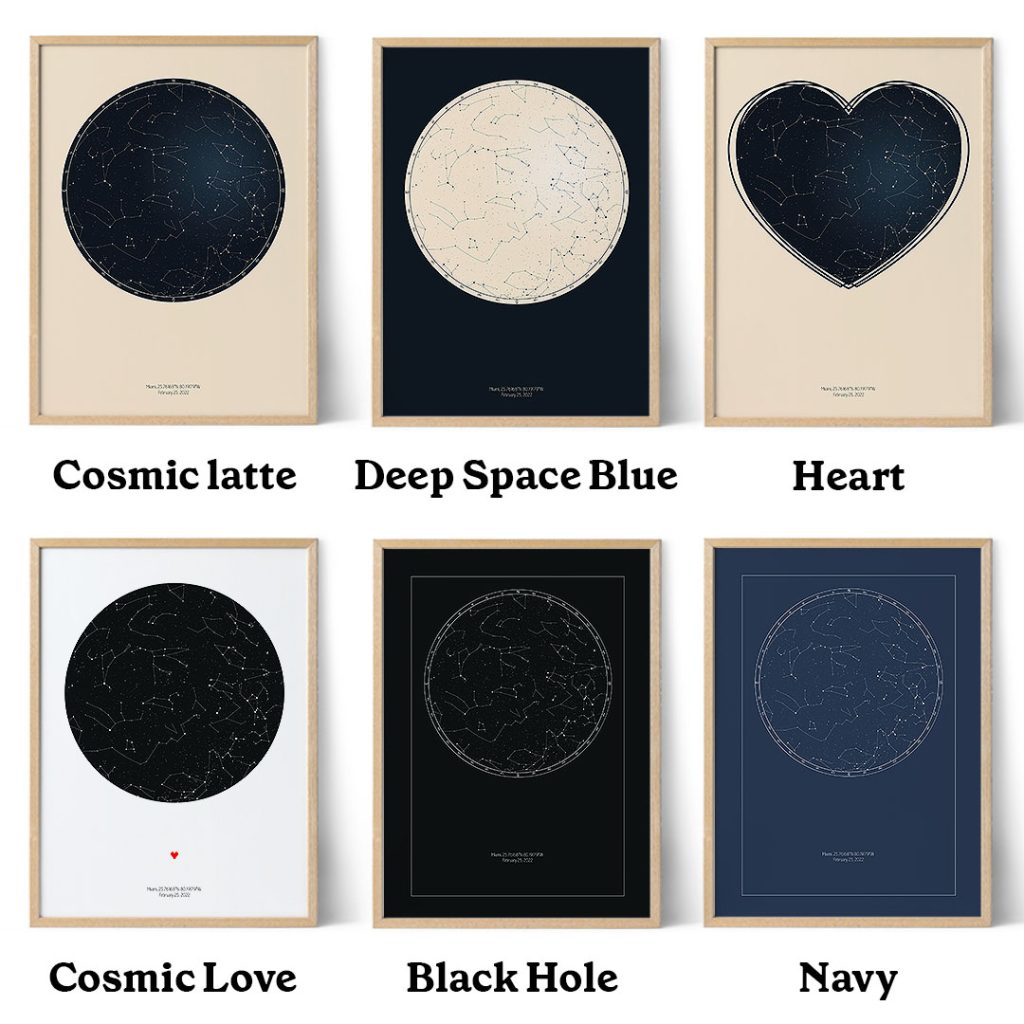
4. We Are All Made of Stars!
It’s a great lyric and one of the most wonderful facts about stars! Even though there are different types and sizes of stars, they all begin with the same components. Stars form from Interstellar gas, mostly hydrogen molecules. When these clouds are pushed into a spinning motion, a small mass begins to form centrally and continues growing. The more mass it gains, the hotter it becomes. When it reaches a temperature of 100 million degrees, nuclear fusion occurs, and a star is born.
Just over 90% of the elements that form our human bodies were formed in stars over the course of billions of years and the lifetimes of many different stars. However, it’s possible that hydrogen, which is found in all the body’s fluids, and lithium, which our body contains tiny trace amounts of, originated from the “Big Bang,” the birth of the universe, which scientists estimate occurred 13.8 billion years ago!
5. Staring Back in Time
Did you know that when we gaze at the stars, we’re actually looking back through time? That’s because even though light travels at 186,000 miles per second, because of the vast distances of space between stars, it often still takes many thousands of years to reach us. Scientists measure cosmic distances in “light years” (simply the distance light can travel in one solar year). So, for example, when we look at the star that is our closest neighbor, Alpha Centauri, light from it takes four light years to reach Earth. Therefore, we’re actually seeing how Alpha Centauri appeared more than four years ago.
The farthest-away star we can see with the naked eye is called V672 Cas, found in the constellation Cassiopeia. It lies 16,308 light years from Earth. So the light you see shining from this star originated long before organized human civilization, during the Earth’s last ice age!
6. Guiding Star
Humans have used the stars to guide themselves on sometimes vast journeys over both land and sea. The Egyptians created the earliest accurate star chart so far discovered, which is some 3,500 years old and dates from 1534 BC.
However, although it cannot be conclusively confirmed, many experts believe the earliest depiction of the stars may have been discovered in Germany in 1979. A Mammoth’s tusk, dating from around 32,500 years ago, was found carved with what seems likely to be a representation of the constellation of Orion.
7. Twinkle, Twinkle, Little Star
We’ve all looked skyward to see a canvas of twinkling stars at some point. But don’t be fooled; those stars aren’t actually twinkling. The effect is an optical illusion caused by the Earth’s atmosphere. Because the stars’ light has to pass through so many layers of the atmosphere, which has varying densities, it can create the impression they’re twinkling.
Stars shining lower in the sky, closer to the horizon, will often appear to twinkle more than those higher in the heavens, and this is simply due to us viewing them at a shallower angle. This means we’re looking at them through a larger slice of the atmosphere. It’s the same effect that makes the moon look larger when it first rises.
8. Stars in Your Eyes
Look up into the sky on a dark, cloudless night, and you might be inclined to think you’re looking at millions of stars. But in reality, we can only see about 2,000, give or take, at any given time. It’s true that millions of stars exist in our universe, but most can only be seen using telescopes.
The very brightest stars we can see are called 1st magnitude and, in the northern hemisphere, include Sirius (in the constellation of Canis Majoris), Canopus (in Alpha Carinae), Arcturus (in Bootes), and Vega (in the constellation of Lyra). The faintest stars we can see with the naked eye are of 6th magnitude.
9. Signs in the Stars
Of course, whether we know how to spot them or not, some of the best-known star constellations are the twelve that form what we know in Western astrology as the Zodiac. Heavily influenced by astronomical observations made by the Greeks and Babylonians, the word Zodiac is even derived from the ancient Greek words zōdiakòs kýklos, which translates as “circle of little animals.”
The constellations of the Zodiac occupy a circular band in the sky that follows the path of the sun, known as the ecliptic, which means that from Earth the sun appears to pass through each of the Zodiac constellations (Aries, Taurus, Gemini, Cancer, Leo, Virgo, Libra, Scorpio, Sagittarius, Capricorn, Aquarius, and Pisces) roughly every month.
In Western astrology, Zodiac signs have been used to define traits in differing personalities, and you can immortalize your own star sign’s uniqueness, or that of a loved one or friend, with fantastic Zodiac Wall Art.
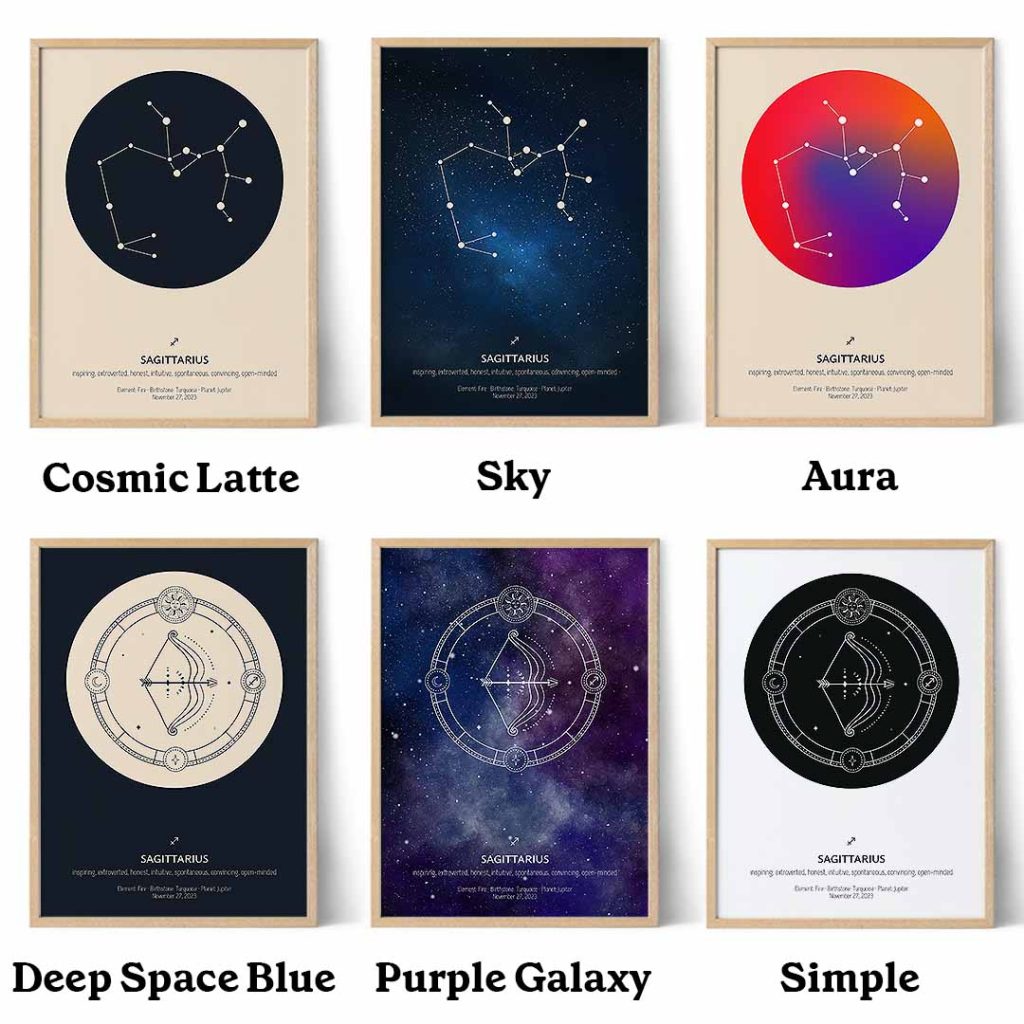
10. Gold Star Treatment
We all know that our sun is a star, but did you know it’s actually categorized as a dwarf star? We might think our beloved sun sets the gold standard for what a star should be, yet in the grand scheme of things, the sun is much smaller than most stars in the universe. For example, Betelgeuse (in the constellation of Orion) is one of the largest stars we can see with the naked eye, is classified as a red giant, and is actually 700 times bigger than our sun.
As a dwarf star, our sun is less powerful than an average star, but the good news is that it will have a longer celestial life. The sun is already 4.6 billion years old, but it’s probably only halfway through its 9 to 10-billion-year life span.







